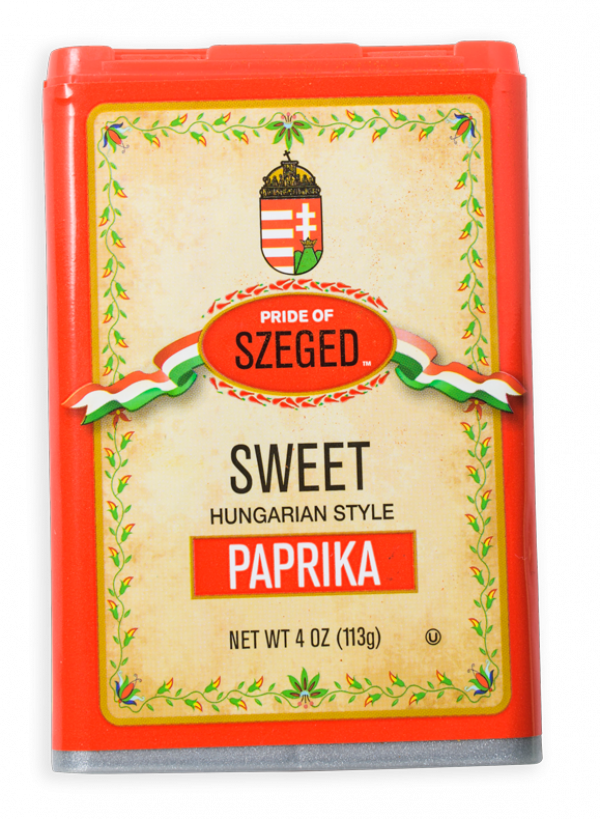A fish dish that sneaks up on you like a thief.
An unlikely menu description, but its a good translation of both the name and flavor of chraimeh, a Sephardic recipe in which fish is braised in copious oil, garlic and a spicy tomato sauce.
That spicy sauce has a way of tricking you, says Einat Admony, Tel Aviv native and New York City restaurateur. “The origin of the word [chraimeh] is the thief, or like a bastard. The spice comes at the end. It kind of surprise you.”
The simplicity of braised fish and the boldness of the chraimeh's vibrant tomato sauce appealed to us, but we wanted to craft a recipe that relied mostly on mainstream pantry staples.
Sephardic cuisine draws deeply on its North African and Middle Eastern roots, and some key ingredients show up in chraimeh (pronounced KHRY-may). The dish is seasoned with paprika, caraway and cumin, but gets its heat from fresh chilies and either harissa—the fiery North African condiment—or pilpelchuma, an aggressively garlicky red paste thick with paprika, chilies, cumin and lemon.
“Each family has their own tradition,” Admony says. “My cousin, for example, will mix the paprika with the oil and let it sit for half an hour.”

Hungarian cuisine is often associated with a slightly sweet paprika—the word is a diminutive of the Hungarian for pepper—but the authority on rich, smoked paprika is still one county in western Spain. Known as pimentón, paprika “de La Vera” is a protected designation of origin, similar to Camembert cheese and prosciutto di Parma.
Peppers of varying heat are harvested in September and slow-dried at around 95°F over smoldering oak logs for about a month before they’re pulverized. The red powder carries an intense, penetrating flavor and smoky aroma that comes in three levels: “dulce” for the mildly sweet, “picante” for spicy, and “agridulce” for a combination. Agridulce is what gives chorizo its kick.
Orencio Hoyo, whose father began making their Yuste 1557 variety 60 years ago, advises going with a brand that lists only one ingredient and comes in a tin can, which keeps out flavor-dulling light and air. “There's a large variety of intensity of the color,” he says. “So the more color it has, the better the quality of the product.”
In Spain it’s commonly sprinkled as a finisher on tomato salad or grilled octopus. Or to better release the flavor, heat it with oil and garlic to make a flavorful drizzle for meat or fish. Just be careful because paprika burns easily; if it darkens in the pan, it will taste bitter.
For her own chraimeh, Admony browns 20 cloves' worth of thinly sliced garlic in much less oil than is traditional. She prefers to use harissa to flavor the dish's spicy tomato sauce. For the fish itself, she likes branzino or red snapper.
For our version, we wanted to skip harissa, pilpelchuma, branzino and any other pricey seafood.
So we started with easily accessible, affordable salmon fillets. We scaled down the garlic to an approachable three cloves. Sliced jalapeño and scallions rounded out the aromatics, which we lightly browned in hot oil. For more distinct flavor, we bloomed whole cumin and coriander seeds, plus ¾ teaspoon smoked paprika. In went diced tomatoes and their liquid.
Then salmon fillets are nestled in the piquant sauce. At first we removed the salmon's skin before cooking, but we found that taking the skin off after cooking not only was easier but it better kept the fillets intact as they simmered; the skin peels off easily after the fish cooks. The salmon was flake-tender in under 10 minutes.
Fresh mint and cilantro, as well as lemon and reserved scallion greens, finished our chraimeh. A drizzle of olive oil also gave it a final hit of richness—something that felt appropriate for the Sephardi-inspired dish.
Related Recipes
January-February 2018

Sign up to receive texts
Successfully signed up to receive texts!
We'll only send our very best offers - Like a $15 store credit to start.
By entering your phone number and submitting this form, you consent to receive marketing text messages (such as promotion codes and cart reminders) from Christopher Kimball's Milk Street at the number provided, including messages sent by autodialer. Consent is not a condition of any purchase. Message and data rates may apply. Message frequency varies. You can unsubscribe at any time by replying STOP or clicking the unsubscribe link (where available) in one of our messages. View our Privacy Policy and Terms of Service.



